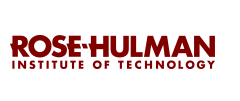Date of Award
Spring 5-2015
Document Type
Thesis
Degree Name
Master of Science in Mechanical Engineering (MSME)
Department
Mechanical Engineering
First Advisor
Jianjian Song
Second Advisor
Mark Yoder
Third Advisor
Patsy Brackin
Abstract
WirelessHART, as an improvement of HART (Highway Addressable Remote Transducer), provides a simple, reliable, and cost-effective method to deliver information without the trouble of wiring in the field. WirelessHART is being used more and more in field devices. Several years ago, Endress + Hauser (U.S.) Automation Instrumentation Inc. designed a WirelessHART solution by attaching a wireless adapter to a field device. The goal of this thesis is to improve the WirelessHART solution of Endress + Hauser to make it less expensive, smaller, and less power-consuming. The work is done in two parts. The first part is to redesign an I/O board on the field device to reduce the power consumption. In this part, a debug version of the I/O board is made. The second part is to redesign the WirelessHART mote to make it less expensive and smaller. The LTP5900-WHM-SmartMesh IP Mote Module (referred to as the LTP5900-WHM module) by Linear Technology is used as a reference design in this part. Impedance matching of the mote antenna feeder trace to 50Ω at 2.4GHz is implemented and analyzed. Radiated power ii measurements of the redesigned mote are made and compared to that of the LTP5900-WHM module. Though the radiated power of redesigned mote is 2 to 4 dBm less than that of the LTP5900-WHM module, the size of the new mote is only half of the LTP5900-WHM module. Recommendations are also provided in this thesis for further improvements on WirelessHART devices.
Recommended Citation
Zeng, Yuxuan, "Design Improvements of WirelessHART Enabled Field Device" (2015). Graduate Theses - Electrical and Computer Engineering. 5.
https://scholar.rose-hulman.edu/electrical_grad_theses/5


Comments
I would like to thank my family for their unwavering support of my studies at Rose-Hulman Institute of Technology. I would like to extend many thanks to my adviser, Dr. Jianjian Song of the Electrical and Computer Department for all of his advice, wisdom, help, and guidance while I worked on this thesis. Also, I would like to thank Mr. Gautham Karnik and Mr. Mathieu Weibel from Endress + Hauser (U.S.) Automation Instrumentation, as this would not have been possible without their help. I also would like to thank Dr. Wheeler of the Rose-Hulman ECE Department for guiding me in the high frequency PCB trace design and impedance matching. Finally, I am grateful to my friend, Leihao Wei, for introducing me to CST simulation.